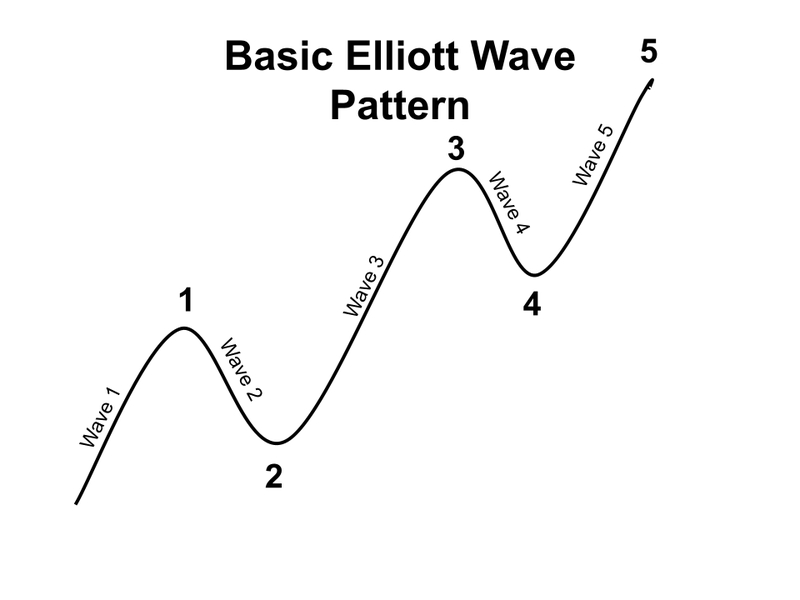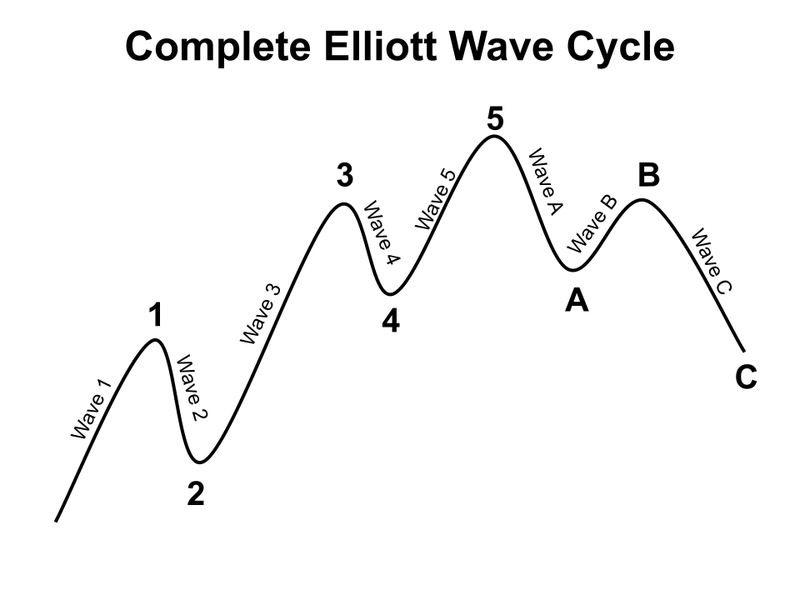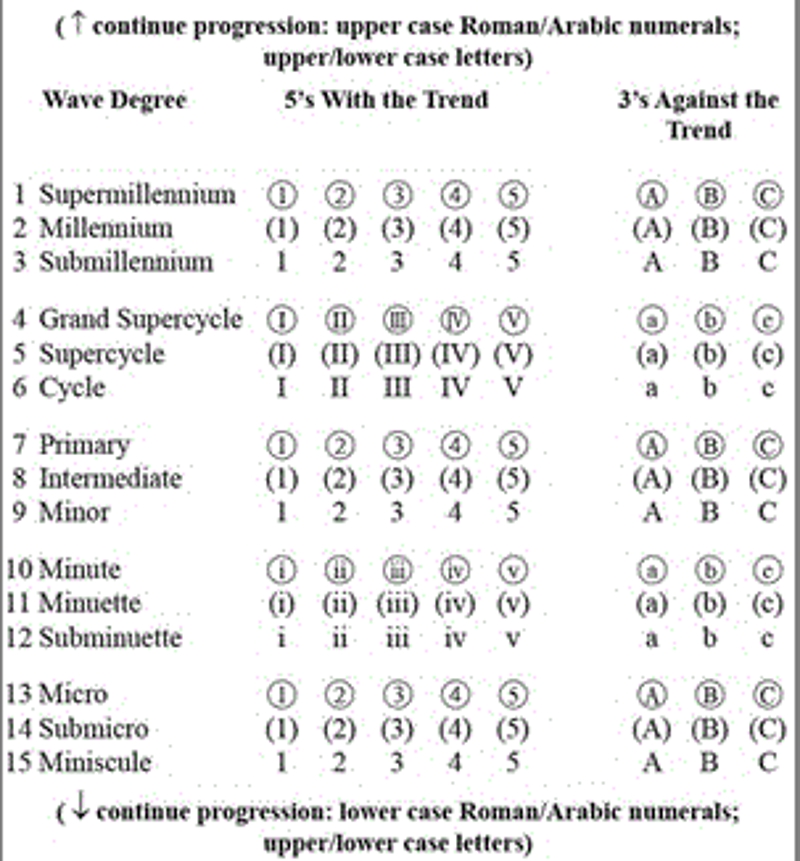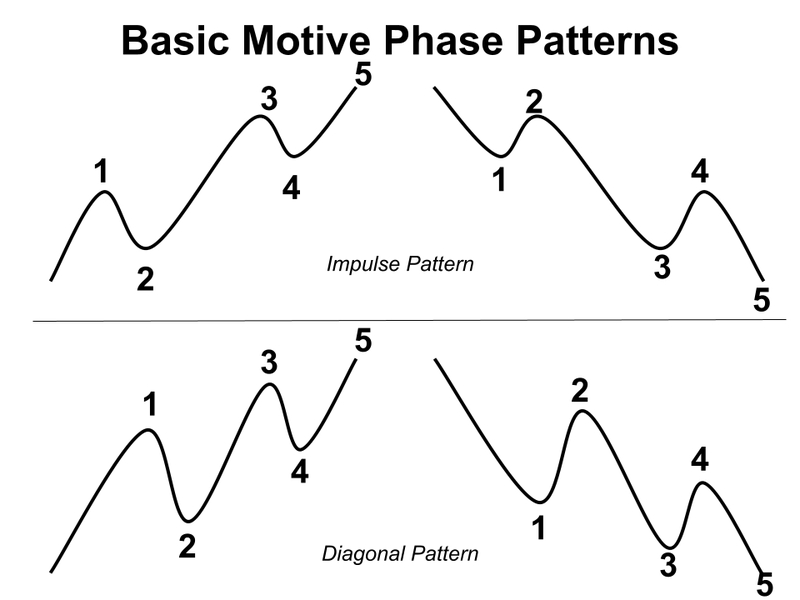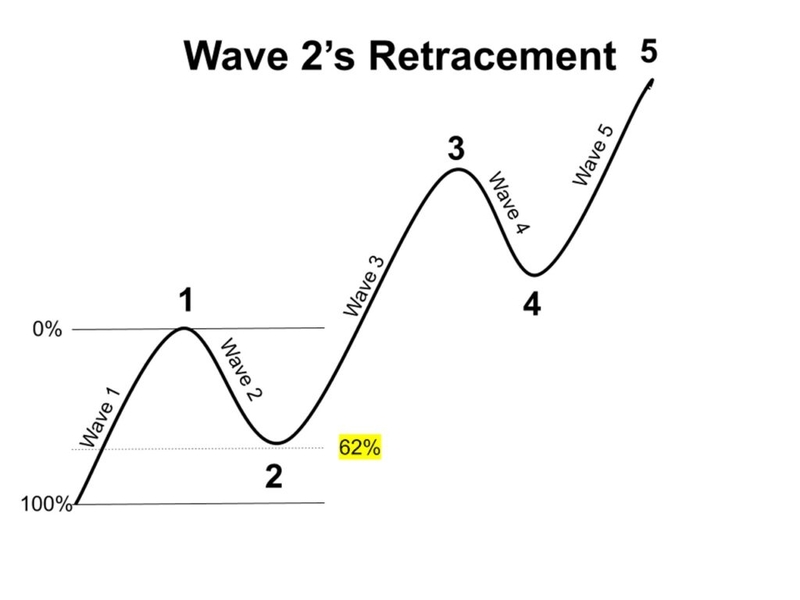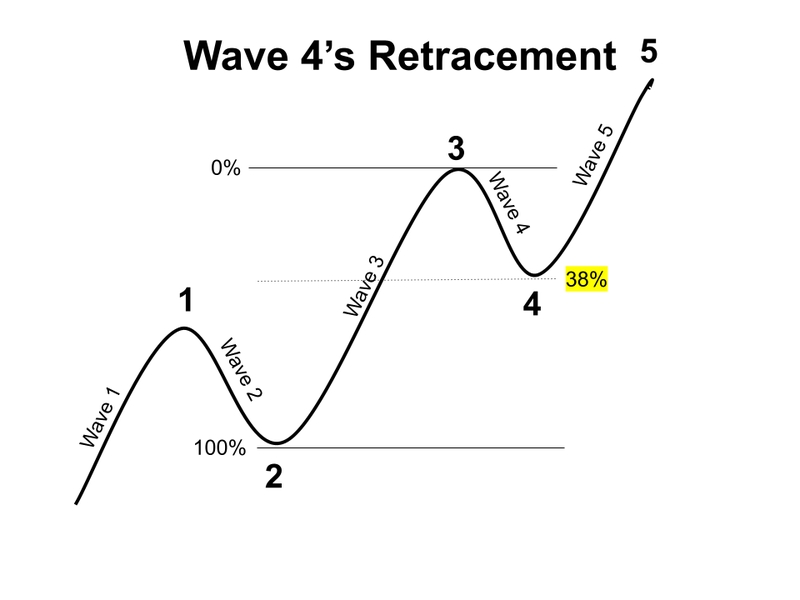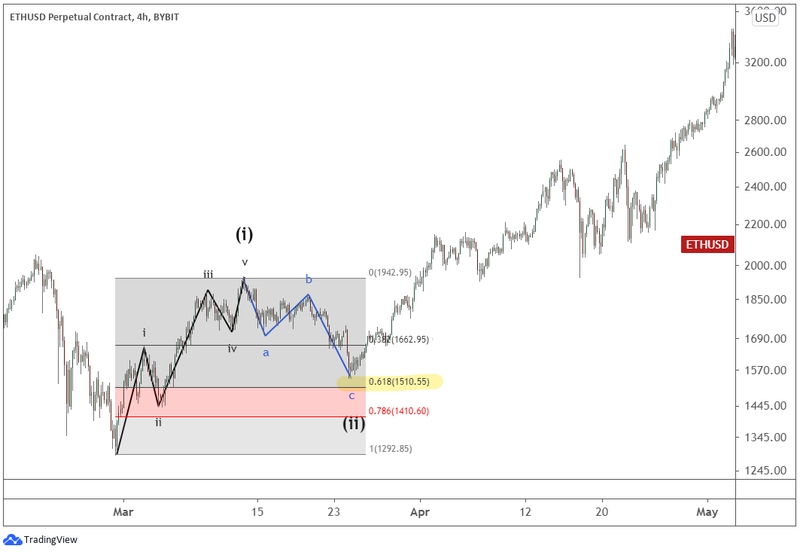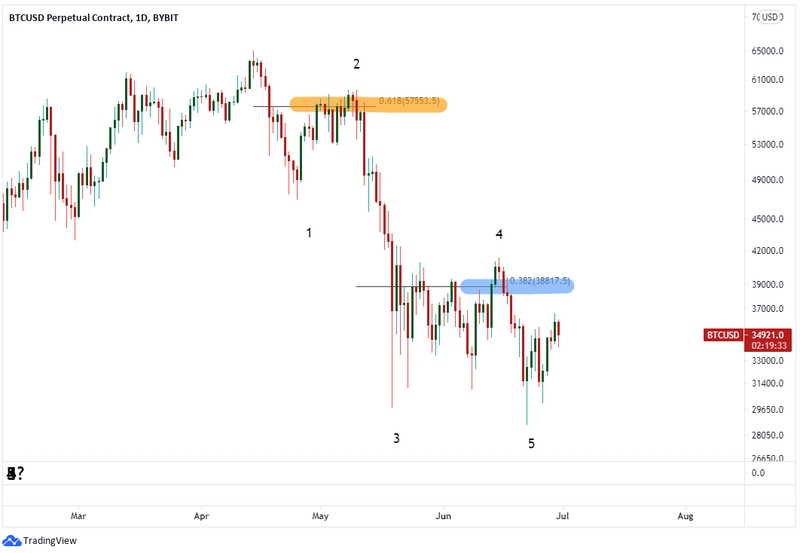How to Use Elliott Wave Theory to Spot Crypto Trend
Show More
Quickly grasp the article's content and gauge market sentiment in just 30 seconds!
Ralph Nelson Elliott developed Elliott Wave Theory in the 1930s to describe the market’s behavior. Elliott realized the financial markets moved in repeatable and recognizable patterns that can help forecast key turning points and the next trend. The basis of the complete Elliott Waves cycle is five waves in the direction of the trend, followed by a three-wave countertrend move.
Based on the structure of a trend, crypto traders can use the Elliott Wave principle to determine if a rally is part of a corrective phase or a continuation of the old trend. Depending on the market’s location within the eight-wave cycle, crypto traders can estimate the potential pivot points for the end of the second and fourth waves, helping them time their entries.
What is the Elliott Wave Theory?
Elliott Wave Theory is used in technical analysis by traders who look for recurring patterns based on market sentiment. They use these patterns to analyze market cycles and forecast future trends.
Elliott Wave Theory combines studying the patterns on a price chart with identifying extremes in investor psychology. When the analysis is performed correctly, the primary value of this theory is that it provides a detailed description of how the market behaves. As a result, traders and analysts can make predictions about future price action and investor behavior.
The Basic Elliott Wave Pattern
Ralph Nelson Elliott, an accountant, author, and consultant, realized that stock market prices trend and reverse in recognizable patterns. The patterns are repetitive in shape but not necessarily in time or size.
The basis behind his model is that man’s social nature is patterned and is expressed in the financial markets. These patterns are repetitive and have predictive value.
Elliott described the market’s progression as “waves,” or directional trend patterns.
Elliott wave patterns – Wave 1 to 5.In the image above, we have the basic Elliott Wave pattern. Each mini-trend is called a wave, and the label of that wave is placed at the end of the trend.
The wave that starts at the lower left and progresses higher to “1” is called Wave 1. The following correction is called Wave 2.
Elliott Wave Price Cycle
A complete cycle will consist of two distinct phases: a phase of progress called “motive,” and a phase of regress called “corrective wave.” The motive waves are labeled with numbers, while the corrective phases are labeled with letters.
Therefore, a complete cycle of motive and corrective trends will consist of eight waves.
Elliott waves the “eight-wave cycle”This eight-wave cycle is the building block for larger patterns within Elliott Wave Theory.
Wave Degrees
Elliott went on to describe how these patterns link together to form larger versions of themselves. Essentially, these patterns form the same pattern of the next larger size, producing a structured progression. However, we need to specify which level of the trend we’re referring to when describing the market’s behavior. These levels of the trend are called wave degrees.
Source: Elliott Wave Principle by Frost and PrechterElliott described nine degrees of waves, from the smallest, Subminuette (minutes) to Grand Supercycle (multi-century). The other six degrees of waves were added later when a further study was made. The idea is that the waves of the cycle subdivide into Primary waves, which then subdivide into intermediate waves, and so on. The waves that make up the smaller degree of trend become the building block for the pattern at the next higher wave degree.
Spotting the Crypto Trends
These Elliott Wave price cycles appear in all large financial markets with price histories and are present in crypto markets, too.
The emotional and psychological back-and-forth that we witness in cryptocurrency trading makes it a great candidate for Elliott Wave analysis. A trader can spot developing trends for Bitcoin, Ethereum, and other cryptocurrencies with a basic knowledge of Elliott Wave and its patterns.
Elliott discovered two distinct phases into which the market enters. Since the market is fractal, these phases will appear on all time frames of charts (i.e., observable patterns repeat themselves in smaller and larger versions). It’s important to note that spotting these phases, the motive and corrective phases, depends on the wave degree you’re viewing.
Motive and Corrective Waves
The two main phases of the crypto markets are motive and corrective. With a little training, these phases can be relatively easy to spot on a chart.
Any strong directional moves are likely to be motive waves, as their goal is to make progress. Also, motive waves are thought of as having five subwaves inside of them. There are only two patterns that you will find in the motive phase: the impulse wave and diagonal wave.
Elliott Impulse and Diagonal pattern.Of the two motive patterns noted above, the impulse wave is the more commonly spotted pattern. Additionally, within an impulse, Waves 2 and 4 are the corrective waves, having completely different patterns.
There are three basic corrective patterns: zigzag, flat, and triangle. The goal of the corrective patterns is to consolidate the previous trend. Some common features you will find during the corrective phase include:
- A corrective wave is called “threes,” as they contain three subwaves.
- A corrective wave is a partial retracement of the previous motive wave.
It can be difficult to identify each pattern in real-time, so start by simply learning if the market is in a motive phase or corrective phase.
Trends and Consolidation
Recall from the wave degree section above that trend waves is labeled with numbers and Roman numerals, while corrective waves are labeled with letters. If you look at an Elliott Wave analyst’s wave count, this is the first distinction you can pick up on that indicates whether the crypto market is within a trend phase or corrective phase.
Example of the Bitcoin chart.In the image above, we have a strong trend moving higher in Bitcoin. Each rally is met with a short-term consolidation that is a partial retracement of the rally.
The rally is a five-wave impulse pattern (black labels). Within waves (ii) and (iv) of the impulse, we can find corrective patterns. Wave (ii) is a zigzag pattern, and wave (iv) is a triangle pattern (blue labels).
Estimating the Depth of Corrective Waves
One of the fantastic elements of Elliott Wave Theory is that the various waves often display a harmonious geometry. With Elliott’s discovery of the market’s behavior, there are a few rules and guidelines the market tends to follow. Some of those guidelines center around the depth of the corrective waves within an impulse.
The two main corrective waves are the second and fourth waves of an impulse. The depth of the correction is different for each of these waves, so it is important to understand this distinction. The Fibonacci ratio retracement tool is an excellent resource to help you quickly identify these levels.
An illustration of the Elliott Wave 2 retracement.If you believe the first wave of a new trend or impulse has completed, then the second wave must retrace less than 100% of the first wave. However, some guidelines suggest how far the second wave may typically retrace.
Many times, the second wave will retrace about 62% of the first wave. The shallow end of a retracement could be 38%, and the deep end of the retracement is around 78%. The minimum retracement level is generally more than 23%. Therefore, most of the time, you will find Wave 2 retracing about 62% of Wave 1’s length.
Example of Elliott wave 4 retracement pattern.If you believe the first three waves of the impulse are complete and the market is correcting in a fourth wave, we can estimate where the fourth wave might end. If Wave 3 is longer than Wave 1, then we’ll see Wave 4 retrace about 38% of the length of Wave 3.
Therefore, if you’re watching a correction unfold, use these ratios mentioned above to help you time entries into the market.
Elliott Five-Waves Movement Explained
In March 2021, Ethereum began building what we now know is a five-wave impulse pattern. Had a trader been watching this in real-time, they would have recognized a completed impulse subwave and corrective zigzag pattern, which built waves (i) and (ii) in March.
Example of Ethereum’s five-wave impulse pattern.Wave (i) is a completed impulse wave, followed by wave (ii), a zigzag pattern. The second wave retraces about 62% of the length of wave (i), which is a common corrective size for (ii).
Ethereum then rallies in waves (iii) to new highs.
Example of Ethereum’s subwaves of the five-wave impulse pattern.The subwaves of wave (iii) are another five-wave impulse pattern. At this point, we can anticipate a wave (iv) sideways correction. The expectation for a fourth wave correction is to dig into about 38% of the length of the wave (iii).
A triangle is created, the end of it terminating near the 38% correction of wave (iii).
The complete of Ethereum’s a larger Elliott Wave impulse pattern.From there, Ethereum continues to rally higher in a fifth and final wave to complete the larger Elliott Wave pattern.
Best Entries and Exits Based on the Waves
When viewing the complete eight-wave cycle in its entirety, there are certain portions of the cycle where trades yield a greater reward relative to the risk. These are the waves that traders will want to focus on to initiate trading opportunities.
The completion of Elliott Waves.The best waves to anticipate and trade are the ends of Wave 2, as you would trade Wave 3. Wave 3s tend to be the longest waves, so they offer great reward potential with limited risk.
Additionally, anticipating the end of Wave 4 to trade Wave 5 can yield good returns.
Depending on the wave degree, traders can anticipate the end of Wave 5 and the start of Wave A in a correction. For short-term day traders, Wave A won’t be large enough to make it worthwhile. However, Wave A could have a handsome reward if you’re viewing a weekly chart or larger.
Likewise, if the wave degree is large enough, trading Wave C in a correction could yield a nice reward, too.
Combination of Elliott Wave Analysis with Technical Indicators
To a skilled analyst, the Elliott Wave is useful for identifying the direction of the larger trend and potential price points where the trend might end. For beginning Elliott Wave traders, other technical tools will help you with your analysis.
Elliott Wave and Fibonacci Retracement Levels
Elliott Wave analysis and Fibonacci tools work very well together. The Elliott Wave cycle of eight waves, plus their corresponding five subwaves, are numbers of the Fibonacci number sequence (0, 1, 1, 2, 3, 5, 8, 13, 21, 34 …). Therefore, it is mathematically intuitive that Fibonacci tools are useful in developing an Elliott Wave count and prediction.
The Fibonacci retracement and Fibonacci Extension tools are commonly used when creating an Elliott Wave analysis. Each of the Fibonacci tools serves its purpose, so it’s important to understand how they’re used — or an incorrect analysis might be generated.
First, adjacent waves — like Wave 2’s retracement of Wave 1 — tend to be related to a common Fibonacci retracement level. Additionally, Wave 4 tends to retrace 38% of the length of Wave 3.
Therefore, an analyst familiar with these guidelines can generate a wave count that can forecast the next likely move.
The Elliott Wave Oscillator
Beginning Elliott Wave traders often become frustrated since it can feel subjective as to where the wave labels are placed on the chart. The Elliott Wave Oscillator (EWO) was created to help newer traders determine which wave the market may be in.
The EWO generally appears at the bottom of your chart. The highest and lowest values of the oscillator might indicate Wave 3. If the oscillator pulls back to the zero line, then it’s considered Wave 4. Lastly, if the market’s price makes a new extreme but the oscillator does not, that may indicate a fifth and final wave of the sequence.
Above, we can see the most extreme reading might be in Wave 3. The next correction brings the oscillator back near the zero line in a proposed Wave 4. The subsequent lower correction shows a divergence between the oscillator and price to make Wave 5. From there, simply piece together where Waves 1 and 2 might sit.
Is Elliott Wave Reliable?
Elliott Wave analysts who have learned the intricacies of Elliott Wave Theory would suggest it does a good job of describing the context of the market’s behavior. However, traders new to Elliott Wave Theory may pass it off as subjective and not useful. Traders interested in learning and implementing Elliott Wave Theory can research its history and application in numerous articles. Different analytical tools work for a variety of traders.
A stick of dynamite in the hands of a child can be dangerous. However, a stick of dynamite in the hands of a trained professional can create useful tunnels through mountains. The biggest challenge with Elliott Wave Theory is that it takes time and practice to learn how to read the markets. However, if you stick with it, the reward is a description of the market spoken through Elliott Wave that can help you find more consistent trades.
The Bottom Line
Elliott Wave Theory is a market analysis method that has been around for nearly 100 years. When correctly implemented, Elliott Wave provides a framework for the mood of the market. It can help traders identify opportunities in the direction of the larger trend.
The reliability of Elliott Wave Theory depends largely on the experience level of the analyst or trader. However, some of the Elliott Wave patterns are easy to identify, helping newer practitioners learn to spot crypto trading opportunities.
Sign up for a free trading account and claim up to $600 rewards.
Grab Up to 5,000 USDT in Rewards
Get additional 50 USDT welcome gift instantly when you sign up today.
